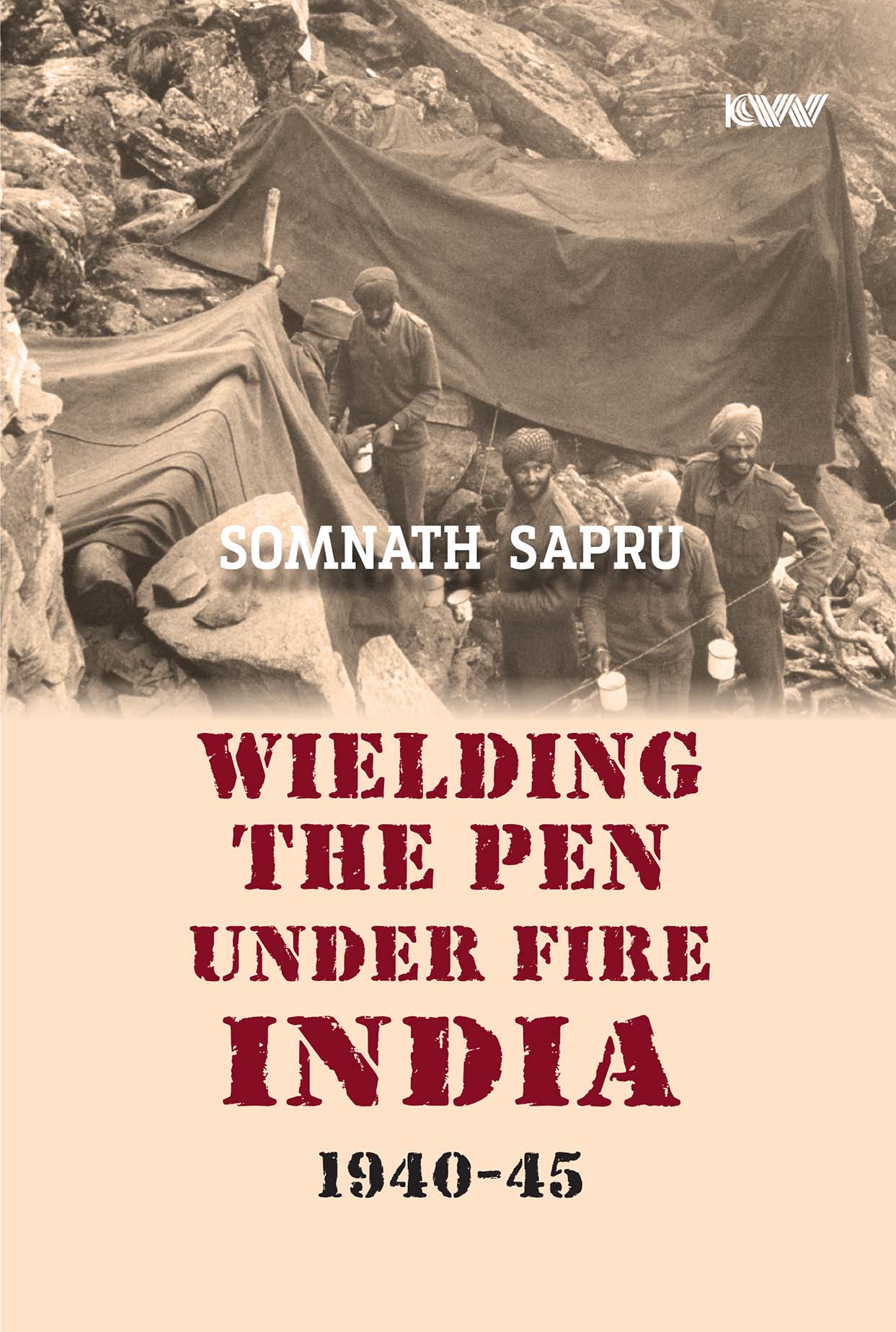About the book: The flow of information to the masses has always been a crucial cornerstone of reporting but it is even more so during wars. This rigorous duty falls upon war correspondents; they are expected to assemble their pluck and acuity to brave battlefields and live to write about them too.
A post wholly occupied by British or other foreign reporters for the longest time, Indians were assigned as official war correspondents only in 1940 during World War II. The impact they made, however, has been an indelible mark in history and its ripples are felt even now.
Reflecting on the origins of war reporting and the need for Public Relations in the Armed Forces, this narrative invites the readers to take a closer look at the incisive and compelling stories of war correspondents from harrowing times, stacked odds and unfavourable conditions.
Follow this narrative’s shifting theatres of war as it takes the readers from North Africa and the Middle East to Burma and Chunking, landing lastly on home soil in Imphal and Kohima. Recorded by reporters whose names deserved to be remembered, it details the exploits of those such as D. F. Karaka, Moti Lal Katju and D. R. Mankekar among many others and promises to stay an unforgettable read.
Somnath Sapru
With over 39 years of experience as a journalist and author, Somnath Sapru has, over the years, specialised in writing on military aviation. His earlier book Skyhawks was on the four Indian pilots of World War I who flew with the Royal Flying Corps (RFC) in Europe.
He was earlier the Defence Correspondent of the Deccan Herald, and Indian Express, Bangalore, later at the Indian Express, New Delhi and at The Pioneer and finally at the Indian Express, Chennai, as Editor. He covered the activities of the three services of the armed forces extensively and specialised in the history of military aviation in the country.
He has been given professional awards such as the Asian Journalist of the Year Award in 1988 and earlier the Jefferson Fellowship in the US in 1979. He served as a Special Correspondent in the Indian Express and as the Editor of The Pioneer, Lucknow and New Delhi for six years and as the Regional Editor of the Indian Express, Chennai, for five years.
His published works cover a variety of subjects such as communication studies, country profiles such as of Japan and biographies but his overriding interest has been military aviation.
Contents
Introduction
What Is Public Relations
Acknowledgements
Who is a War Correspondent?
Military and the Media
Reporting on the Indian Mutiny—1857-1858
Communication—Key to War Reporting
How Rules Developed
Reporting from the New World
World War I—Growing Pains
World War II
The Early Years
Tirah Campaign—1897
Wielding the Pen Under Fire: Captain Moti Lal Katju, MC on to the Desert
Captain M. K. U. Nayar (Nair), MBE
Chindits Go Forth
Noah’s Ark or a Zoo
“Dynamite Mike”
“Sounds in the Jungle”
End of the Line
Dosabhai Framji Karaka: (D. F. Karaka) (April 14, 1911-June 1, 1974)
Interview on Cripps Mission in India
Unification of Command Strategy
A Combat Report
Red Star over China
Broadcast Journalism
Women’s Contribution to War Effort
Nehru’s Warfare Speech
Guerrillas Attack Japs
The War in Burma and China
Englishmen and the Colonial Mindset
Scribes’ Dilemma
IAF Squadrons on the Burma Front
“IAF to the Rescue”
The Wingate Story
On the Printer’s Devil Front!
Karaka (contd.)—On to Imphal /Kohima
Seeing Our Boys in Action
Karaka’s Further War Coverage: Europe—Italy
Back in England
Journalism in War Time: Sri Mrinal Kanti Bose
Facing Death and Courage
Air Supremacy
In Beleaguered Imphal
Royal Wedding Will Bring Victory, an Astro Prediction!
Kohima—What’s the Real Situation?
The Battle of the Kohima Ridge, May 14, 1944
“The Green Hell”
Noel Coward, the Press and the XIV Army
Mankekar (contd.)
Kangaw—The Bloodiest Battle on the Arakan Front
A News Agency Report on Arakan OPS
Kunathur Balaraman 1911-1994
Group Captain Situ Mullick: The Folded Wings
“The Arakan Twins”
Fast Forward—Kargil-1999
Bibliography


 Political Science
Political Science
